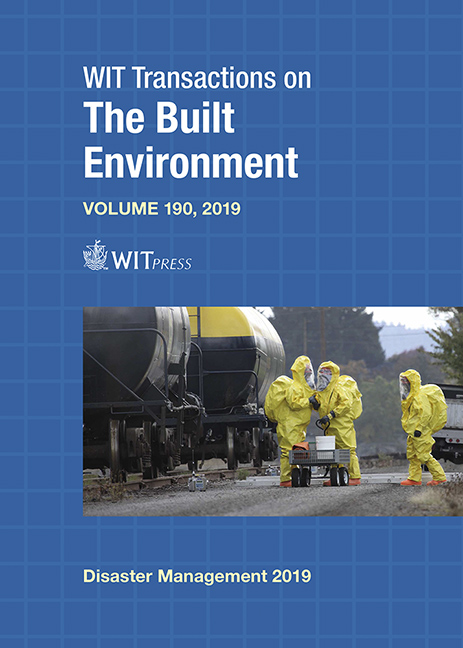RISK COMMUNICATION IN ORDER TO FACILITATE COMMUNITY RESILIENCE AGAINST A LARGE-SCALE FLOOD
Price
Free (open access)
Transaction
Volume
190
Pages
11
Page Range
145 - 155
Published
2019
Size
969 kb
Paper DOI
10.2495/DMAN190131
Copyright
WIT Press
Author(s)
TAKEYASU SUZUKI
Abstract
Due to global abnormal weather, large-scale floods that exceed the planned scale flood have occurred in Japan in recent years. The necessity of wide-area evacuation beyond municipal boundaries is required in order to prevent further victims, because drowning and isolation occurred due to recent large-scale floods. The author applied the risk communication method proposed by the author to the Riverside District (about 1,400 households with a population of about 4,000), Chuo City, Yamanashi Prefecture, Japan which is close to the river bank of the large river and is one of the most dangerous districts out of the inundation area of the Kofu Basin. The northern half of the district is in the zone where houses are swept away by streams of water when bank breakage occurs. The risk communication was designed by setting implementation items at each of five processes “C-A-U-S-E”, incorporating workshops, questionnaire surveys or presenting evacuation simulation results. Through three years of risk communication activities, local residents were aware of and understood the flood risk which exists in the community, found a solution on its own, accepted proposals for wide-area evacuation, and finally they formulated the community disaster management plan for the wide-area evacuation. This paper introduces all processes of this risk communication and endogenous activities by the residents and systematically summarizes achievements as the risk communication method.
Keywords
risk communication, community resilience, community disaster management plan widearea evacuation, flood




